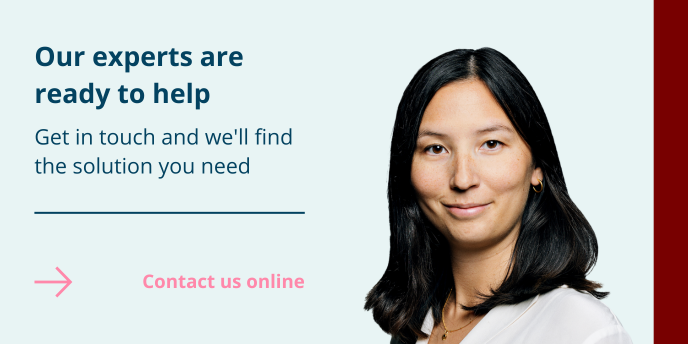With Charlotte Øbakke, Head of Quality, Europe at NNIT
Processes and data are the cornerstone of quality management in life sciences. This is important to keep in mind when using the Veeva Vault Quality Suite. Otherwise, you risk that your quality systems remain detached from your related business processes.
“Break down the silos” has become a mantra for efforts by the life sciences industry to digitize and move away from paper-based systems. Nowhere is this more relevant than in quality management, which touches upon all GxP-related business processes applied across the entire organization. Herein lies much of the complexity of implementing a digital Quality Management System (QMS).
In order for digital quality solutions like the Veeva Vault Quality Suite to provide the desired benefits, such as easier navigation and search, more data utilization, and better integration between business units, you must have a robust and systematic structure in place for your quality management system.
Companies underestimate preparation requirements
Charlotte Øbakke, Head of Quality, Europe at NNIT, points out that many pharma companies tend to underestimate the effort needed to prepare for successful implementation of a new and modern QMS like the Vault Quality solution.
– Legacy systems are often characterized by years of silo-oriented working, leaving the system with no structure and a lack of transparency. In other cases, you have a scattered IT landscape where you need to extract data from a variety of sources and systems. Investing time prior to the implementation is essential to harvest the full potential and achieve a good and fast user adoption, says Charlotte Øbakke.
Preparation includes defining a clear purpose and requirements for the solution, along with a harmonized global framework and a solid data governance model. Applying a process- and data-centric framework, you combine the organization’s processes, link departments, allow for standardization and harmonization, and leverage data-driven decisions in your organization.
Industry insights and best practices ensure smooth implementation
You need a systematic approach, comprehensive knowledge of pharma processes, good data governance and careful preparation to navigate these complexities successfully. For this reason, NNIT uses industry best practices and well-proven methodologies to ensure smooth implementation projects.
– In your Vault Quality suite, it’s important to understand how to establish and sustain a strong data model that can help your company make more informed decisions, drive continuous improvement of the QMS, and power business success. At NNIT, we have good experience of building useful and reliable data and solid governance models to support your operational excellence agenda. This is why we always recommend working with an experienced Veeva partner with the necessary life sciences capabilities, says Charlotte Øbakke.
Train for the right roles
Charlotte Øbakke emphasizes the use of Veeva Vault Training for role-based training as an area where experience and knowledge of both Veeva Vault Training application and how to develop an effective learning environment can make a big difference.
– In the GxP-regulated industry, there are strict requirements for training, which must be directly connected to the roles and responsibilities of the individual employee. An effective training program defines business processes, roles, learning objectives, effectiveness checks and suitable training methods. This is key to achieving an effective learning culture that grows and expands competencies in the organization, says Charlotte Øbakke.
“Many pharma companies tend to underestimate the effort needed to prepare for a successful implementation of a new and modern QMS like the Quality Vault solution.”
– Charlotte Øbakke, Head of Quality, Europe at NNIT
Don’t forget to plan ahead
Successfully implementing Veeva Vault Quality is only the beginning. Companies must be prepared to manage the continuous release of updates and new features. Without a strategic approach to managing your backlog of changes that need to be implemented and validated, it is easy to lose focus.
– Keeping up with the constant updates and new feature releases from Veeva is challenging, and we frequently encounter clients that have fallen behind. Thanks to NNIT’s life sciences experience, we can help identify and prioritize which updates provide the most business value, and we can assist to implement and anchor these in your organization, says Charlotte Øbakke.
Valuable lessons about the Veeva Vault Quality suite
As a leading Veeva partner, NNIT has participated in more than 450 completed Veeva projects. We know that aligning the whole organization for a new paradigm of continuous improvement is essential for success.
Our vast experience with the Veeva Vault Quality suite has amongst other things taught us that it is important to
- Save time with AI-based document classification: AI-based document classification is a technique that enables automated analysis of content and categorizes the documents according to your document and process landscape.
- Gain a Right-First-Time culture through training: With tailored training assignments, the latest technology and efficient training methods, managed in a modern learning management system like Veeva Vault Quality, you will achieve a state-of-the-art learning experience.
- Ensure integration between QMS and RIM: Connect the Quality and RIM suites in Veeva Vault to ensure that all changes with regulatory impact are managed and closely connected with the update of the registration file in the RIM Vault.
- Prepare for constant change: Using Veeva Vault Quality means continuous updates and opportunities for improvements. Install a strong governance model to ensure sustainability and establish a monitoring program for the QMS so you know how to prioritize.

